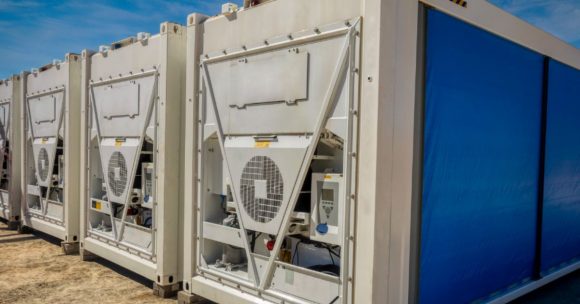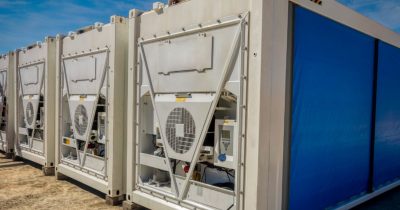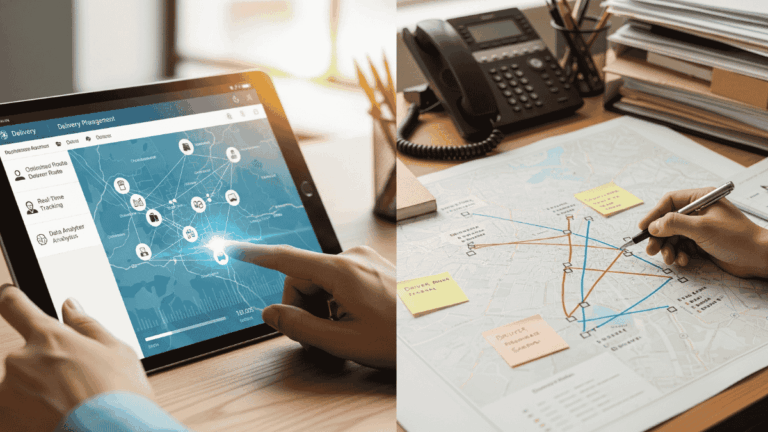Cold chain logistics is all around us. From the medication a doctor or hospital receives to administer to patients, to the grocery items millions of consumers purchase each day worldwide.
Picture this: You walk into a shopping store and head to the frozen food section. You’re trying to decide what to cook up for your family. The process the package had to go through to arrive in the store’s freezer is cold chain logistics. Cold chain logistics refers to the specialized processes involved in the storage and transport of temperature-sensitive goods, such as food and medications.
The importance of cold chain logistics lies in its role in the safe transportation of temperature-sensitive products, ensuring they remain effective and safe for consumption.
In this article, we explore the cold chain logistics industry, challenges, solutions and successful examples where this form of logistics is thriving.
As a logistics manager or business owner in the cold chain industry, you will need to ensure the proper transportation of temperature-sensitive goods.
What happens when temperature sensitive cargo is shipped incorrectly?
- Products such as fresh food, dairy, seafood, and pharmaceuticals risk spoilage.
- Significant financial losses.
- Potential harm to end consumers.
- Damaging brand reputation.
5 Industry uses of cold chain logistics
- Pharmaceutical industry
Products: Vaccines, biologics, insulin, blood products, and other temperature-sensitive medications.
How is it transported? Pharmaceuticals are transported in refrigerated trucks, air-conditioned containers, or specialized packaging that maintains required temperatures. Cold chain logistics companies play a crucial role in managing the transport of temperature-sensitive products and ensuring compliance with regulations.
2. Food and Beverage Industry
Products: Fresh produce, dairy products, seafood, frozen foods, meats, and beverages.
How is it transported? Cold storage warehouses and refrigerated trucks (reefers) are used for transportation.
Products are often packed in insulated containers or crates with cooling elements to maintain appropriate temperatures. Air freight and maritime reefer containers are also used for international shipping, ensuring products remain fresh from farm to table.
3. Floral Industry
Products: Fresh flowers and plants.
How is it transported? Flowers are sensitive to temperature and humidity and are transported in refrigerated trucks and air freight containers. Cold storage facilities are used to extend shelf life and maintain freshness from growers to retailers.
Here’s a scenario: You are a flower distributor who sources delicate blooms from growers in South America.
To ensure the flowers remain fresh during transit, the flowers are carefully packed in refrigerated trucks set to the optimal temperature and humidity levels. These trucks transport the flowers to a nearby airport, where they are loaded into air freight containers equipped with cooling systems.
Upon arrival at the destination, the flowers are quickly transferred to cold storage facilities. These facilities maintain the necessary conditions to extend the flowers’ shelf life, ensuring they arrive at retailers fresh and ready for sale.
4. Agricultural Industry
Products: Seeds, live plants, and some agricultural chemicals.
How is it transported? Seeds and live plants are transported in climate-controlled vehicles to ensure they are not exposed to extreme temperatures that could affect germination rates or plant health. Cold storage facilities are also used to maintain quality during transit and storage.
5. Medical devices industry
Products: Certain medical devices that require temperature control, such as diagnostic kits and blood handling equipment.
How is it transported? These devices are transported in temperature-controlled environments using refrigerated trucks and insulated packaging. Monitoring systems are often used to ensure that temperature-sensitive components remain within the required range.
Benefits of cold chain logistics
As a logistics company, it’s important to provide customers with goods that are fresh – your customers may be a grocery store or restaurant chain. Imagine the implications on spoilt perishables arriving at a store or restaurant.
Cold chain logistics operations are a meticulous process focused on the transport and storage of perishable and temperature-sensitive goods.
Here are some benefits of cold chain logistics:
- Extends the shelf life of perishable goods.
- reduces waste and ensures product quality on delivery.
- Allows temperature-sensitive items to be transported over long distances.
Let’s explore the challenges a logistics provider may encounter in their operations.
Temperature control and fluctuations
Picture this: You’re transporting a shipment of fresh produce. Suddenly, the temperature inside the container starts to rise.
Without real-time monitoring, the entire load could spoil, costing you thousands. But with sensors and IoT devices, you get instant alerts and adjust the temperature immediately, saving the shipment and keeping your customers happy.
Temperature monitoring systems are essential for preventing product damage and ensuring product quality throughout storage and transportation processes.
Here’s a tip: When your fresh produce shipment passes through multiple checkpoints, like customs and storage facilities, each transfer risks temperature changes that could affect the quality of your products. Temperature control is important for the integrity of your shipment.
Damaged cooler/freezer doors
Rite-Hite is a global leader in making, selling, and servicing loading dock equipment, industrial doors, and safety barriers. It highlights that cooler and freezer doors that are damaged are one of the most common problems cold storage facilities face.
What’s the solution?
Companies can use devices or sensors to monitor the condition of doors and detect damage or malfunction early, allowing for timely repairs.
Your shipment of fresh produce must pass through several checkpoints, including customs and various storage facilities. Each transfer poses a risk of temperature fluctuation, potentially compromising the product quality.
Damaged goods
Shipments in cold chain logistics can face problems like damaged products or exposure to temperatures that are too warm in the trailer. Temperature fluctuations during transportation and storage pose significant challenges, risking product quality and safety, especially for temperature-sensitive items like food and pharmaceuticals.
What’s the solution?
Companies can use radio frequency identification (RFID) technology. This technology uses radio waves to automatically identify and track objects.
Examples of cold chain logistics success
Let’s take a look at some cold chain logistics initiatives blazing a trail in the industry.
The complexity of the cold chain process and the importance of maintaining consistent temperatures throughout the entire supply chain cannot be overstated.
Maersk facility in New Zealand
Maersk’s cold chain facility at Ruakura Superhub in Hamilton, New Zealand is an award-winning cold store and key transport corridor between Hamilton and Auckland.
Why does cold storage matter? The site can send freight directly to a ship in Auckland or Tauranga through the inland port by rail or road. This removes about 6,000 trucks from the road each year.
UPS Healthcare
UPS Healthcare is on a mission to become the world’s number one complex healthcare logistics provider, with its first facility in Ireland.
A $13 million investment for the facility includes nearly 20,000 square feet of space. It handles small packages, freight forwarding, logistics, and distribution with ease.
Why does this cold storage matter? For healthcare and pharmaceutical industries, maintaining robust supply chains between these regions is critical. This ensures timely delivery of medical supplies, drugs, and vaccines.
FedEx
Logistics giant has introduced FedEx Surround®, a smart solution aimed at boosting logistics and supply chain management.
This solution is now available in Singapore and Hong Kong Special Administrative Region, with plans to expand soon to other Asia-Pacific markets like China, Japan, Malaysia, Australia, Korea, and Taiwan.
Here are some key features of FedEx’s new tool:
- Flexibility and control: The FedEx Surround® dashboard offers near real-time global visibility and predictive analytics, powered by AI and SenseAware ID, giving customers greater control over their shipments.
- Enhanced operational support: Special handling codes improve operational capabilities, allowing for prioritized boarding, cold chain support, and interventions both within and outside the FedEx network.
- Peace of mind: FedEx provides 24/7 expert support, with dedicated teams at hubs, ramps, and stations to monitor and intervene as needed, along with customized reporting to keep customers informed.
Best practices in cold chain logistics
The integrity of your temperature-sensitive cargo is essential for a successful cargo shipment. Here are some best practices to implement in your logistics operations to ensure goods are kept shipshape.
- Train your team regularly: Make sure your team knows how to handle temperature-sensitive products and the importance of maintaining the cold chain.
- Use Data Analytics: Use data to predict risks and improve your logistics operations.
- Invest in good packaging: Use high-quality insulated containers and cooling materials to keep temperatures stable.
- Perform regular audits: Check your cold chain processes regularly to find and fix any weaknesses.
- Evaluate temperature-controlled packaging solutions: Assess different temperature-controlled packaging solutions to enhance freshness and stability during transit, ensuring you select the most effective and cost-efficient options for your specific needs.
Global cold chain logistics market
Grand View Research forecasts the global logistics industry is set to experience good growth over the next six years. The report adds that changes in consumer preferences and growing e-commerce sales are expected to drive the growth of the market.
The critical role of the cold supply chain in ensuring the quality of temperature-sensitive products throughout various stages, including transportation and distribution, cannot be overstated.
Reasons for market growth
- The rise of organized retail stores in developing countries is driving a growing need for cold chain solutions.
- Increasing investment in cold chains and government efforts to reduce food waste are expected to drive market growth.
- The increasing use of technologies like RFID and automation in cold chain applications offers great growth opportunities for the market.
- Maintaining optimal temperatures throughout the entire supply chain in cold chain logistics is crucial for managing temperature-sensitive goods, addressing capacity constraints, and meeting consumer demands for fresher products while adhering to strict regulations.
Here are some key region market insights
USA
The demand for cold storage facilities is increasing due to the growth of e-commerce and the need for temperature-controlled storage in the pharmaceutical and food industries.
Advanced technologies like IoT sensors and blockchain are improving the ability to track and manage temperature-sensitive products, making the cold chain more effective.
United Kingdom
The UK has seen a big increase in online grocery shopping and e-commerce, leading to a higher demand for cold storage and transportation to keep perishable goods fresh.
The pharmaceutical industry also drives the need for cold chain solutions, with a growing demand for temperature-controlled storage and transport for vaccines, biologics, and other medical products.
Germany
A key trend in Germany’s cold chain industry is the use of technology, such as IoT devices and sensors, which improve the monitoring, tracking, and management of temperature-sensitive products throughout the supply chain.
Technology in cold chain management
Tive is a US-based company that provides real-time visibility solutions for supply chain and logistics operations. It specializes in offering advanced tracking and monitoring technologies.
Cold chain logistics management is crucial for ensuring that goods are transported and stored at specific temperatures throughout the supply chain, from cold storage facilities to retail points.
The company points out trends in cold chain management. Artificial Intelligence (AI) and data analytics are changing the game in supply chain management by improving visibility.
These technologies allow cold chain operators to predict problems before they happen and monitor shipments in real-time.
Route optimization
Route optimization helps determine the most efficient route to travel. This technology can assist cold chain logistics specialists to reduce transit time and fuel consumption while maintaining optimal temperatures, ensuring that goods arrive fresh and within the required time frame.
Cold chain shipping involves specialized transportation methods and equipment necessary for maintaining specific temperature and humidity levels for temperature-sensitive goods.
Using route optimization software like Locate2u, doesn’t just give you the best route. It considers the time of day, weather hazards, roadblocks, and more.
Here’s why you need route optimization in your cold chain logistics company:
- Improve your customer’s experience.
- Improve your company’s productivity.
- Create optimal routes for your deliveries.
- Lower operational costs.
- Better driver management
NOW READ: Study: Supply chain challenges worldwide
Photo Credits: Canva and FedEx
About the author
Sharl is a qualified journalist. He has over 10 years’ experience in the media industry, including positions as an editor of a magazine and Business Editor of a daily newspaper. Sharl also has experience in logistics specifically operations, where he worked with global food aid organisations distributing food into Africa. Sharl enjoys writing business stories and human interest pieces.











